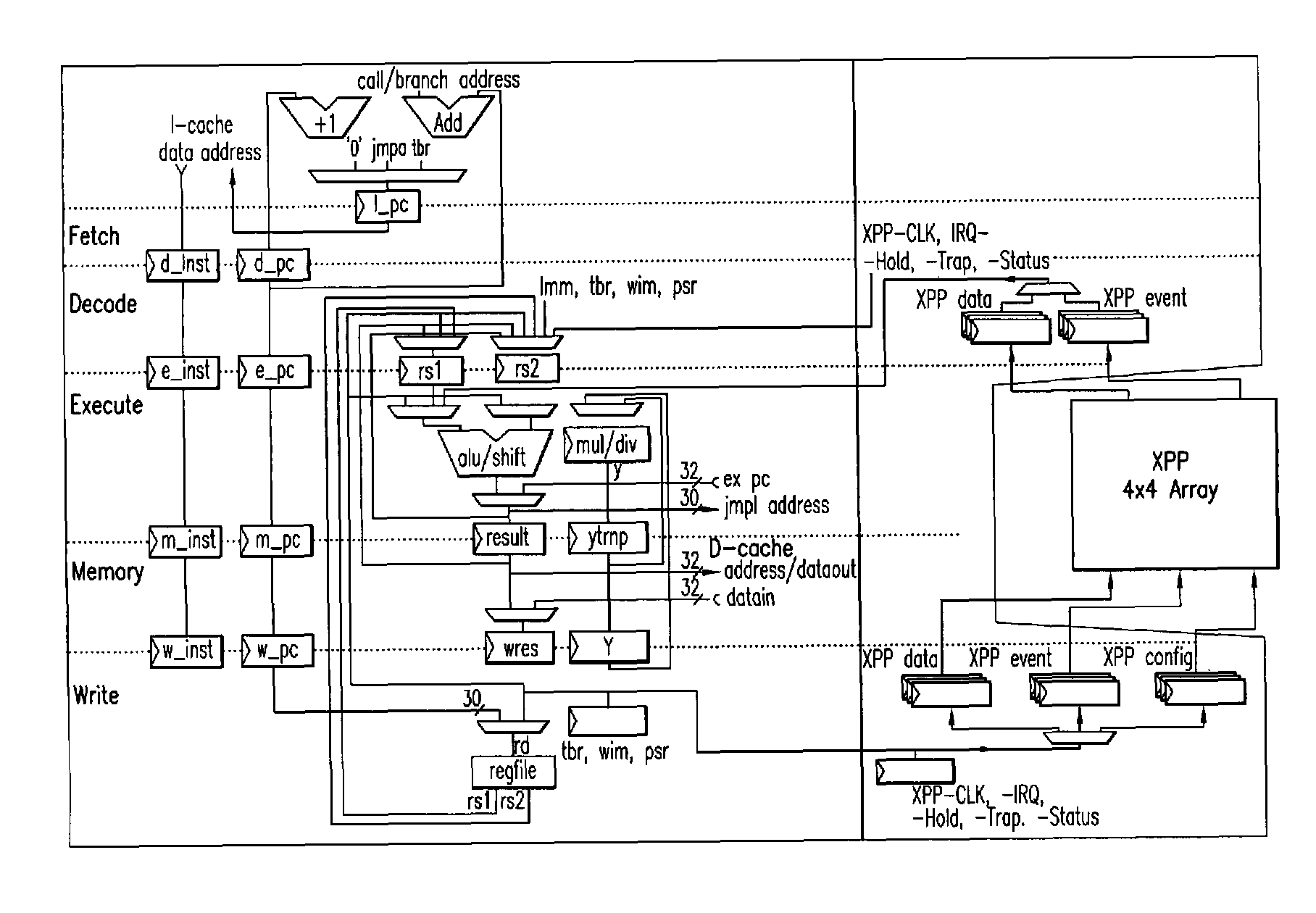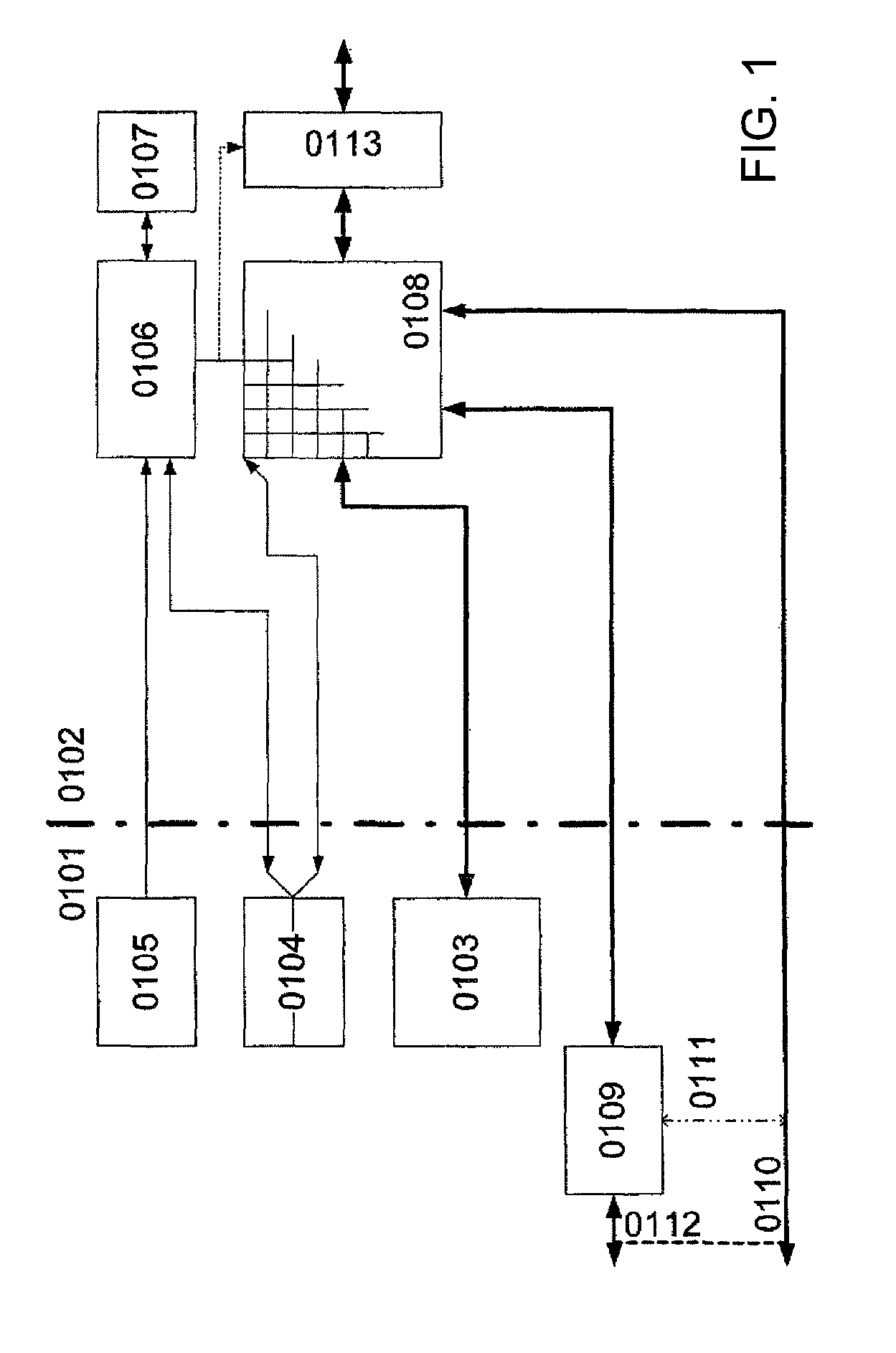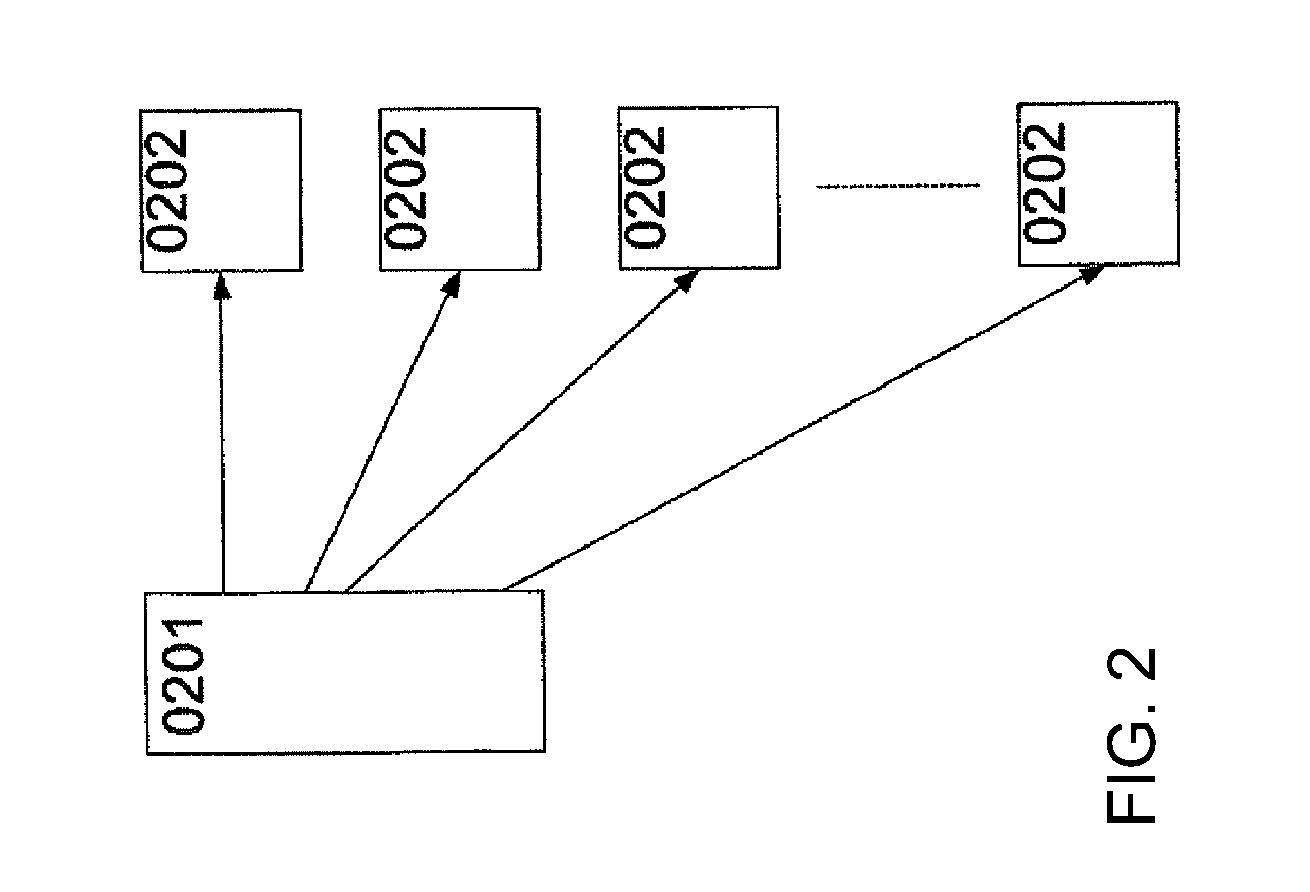Data processing system having integrated pipelined array data processor
a data processing system and data processing technology, applied in the direction of memory addressing/allocation/relocation, instruments, and architectures with multiple processing units, can solve the problems of increasing the limit of conventional processors, risky and expensive, and data or stream oriented applications are not well suited to this environmen
- Summary
- Abstract
- Description
- Claims
- Application Information
AI Technical Summary
Benefits of technology
Problems solved by technology
Method used
Image
Examples
example a
[0270]for i:=1 to 10,000[0271]1. LOAD-PROCESS-STORE cycle: load and process 1 . . . 256[0272]2. LOAD-PROCESS-STORE cycle: load and process 257 . . . 512[0273]3. LOAD-PROCESS-STORE cycle: load and process 513 . . . 768
example b
[0274]for i:=1 to 1000[0275]for j:=1 to 256[0276]1. LOAD-PROCESS-STORE cycle: load and process[0277]i=1; j=1 . . . 256[0278]2. LOAD-PROCESS-STORE cycle: load and process[0279]i=2; j=1 . . . 256[0280]3. LOAD-PROCESS-STORE cycle: load and process[0281]i=3; j=1 . . . 256[0282]. . .
example c
[0283]for i:=1 to 1000[0284]for j:=1 to 512[0285]1. LOAD-PROCESS-STORE cycle: load and process[0286]i=1; j=1 . . . 256[0287]2. LOAD-PROCESS-STORE cycle: load and process[0288]i=1; j=257 . . . 512[0289]3. LOAD-PROCESS-STORE cycle: load and process[0290]i=2; j=1 . . . 256[0291]. . .
[0292]It may be desirable for each configuration to be considered to be atomic, i.e., not interruptable. This may therefore solve the problem of having to save the internal data of the PA and the internal status in the event of an interruption. During execution of a configuration, the particular status may be written to the RAM-PAEs together with the data.
[0293]However, with this method, it may be that initially no statement is possible regarding the runtime behavior of a configuration. This may result in disadvantages with respect to the realtime capability and the task change performance.
[0294]Therefore, in an embodiment of the present invention, the runtime of each configuration may be limited to a certa...
PUM
 Login to View More
Login to View More Abstract
Description
Claims
Application Information
 Login to View More
Login to View More - R&D
- Intellectual Property
- Life Sciences
- Materials
- Tech Scout
- Unparalleled Data Quality
- Higher Quality Content
- 60% Fewer Hallucinations
Browse by: Latest US Patents, China's latest patents, Technical Efficacy Thesaurus, Application Domain, Technology Topic, Popular Technical Reports.
© 2025 PatSnap. All rights reserved.Legal|Privacy policy|Modern Slavery Act Transparency Statement|Sitemap|About US| Contact US: help@patsnap.com



